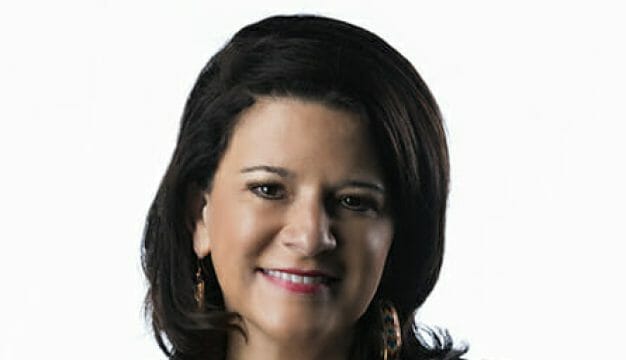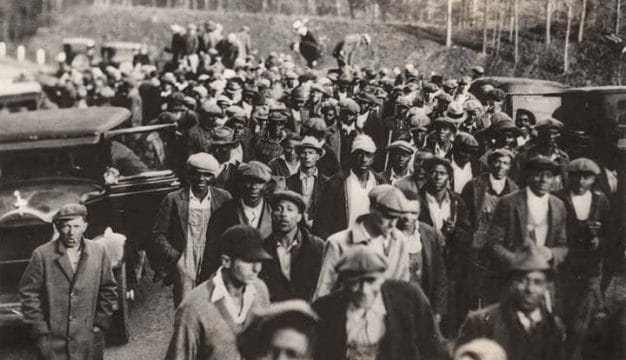Blue-Gray All-Star Football Classic
 Cramton Bowl Today
The Blue-Gray All-Star Football Classic was a college football game featuring senior players from across the country held annually in Montgomery from 1938 through 2004. Montgomery's Cramton Bowl stadium hosted all but the last, played at Troy University's Movie Gallery Stadium in 2004.
Cramton Bowl Today
The Blue-Gray All-Star Football Classic was a college football game featuring senior players from across the country held annually in Montgomery from 1938 through 2004. Montgomery's Cramton Bowl stadium hosted all but the last, played at Troy University's Movie Gallery Stadium in 2004.
The Blue-Gray Classic was the brainchild of Alabama sports promoter William "Champ" Pickens, the older brother of folklorist Ruby Pickens Tartt. Drawing on his experience managing a western tour for Howard "Red" Grange's All-Stars in the 1920s, Pickens suggested the concept for the game to the promoters of the 1939 New York World's Fair. He envisioned the contest as an intersectional all-star contest with players from schools on either side of the Mason-Dixon Line representing the "North" and the "South." The "Gray" teams composed of coaches and players from schools in the South faced "Blue" teams composed of those from northern states as well as those from the rest of the country. From the beginning, Civil War regalia and symbolism dominated the Blue-Gray game. The game programs described the coaches as "generals" and the players as "soldiers" and the tickets sometimes featured the images of Ulysses S. Grant and Robert E. Lee, leading generals of the Union and Confederacy, respectively. Pickens felt the association would heighten interest in the contest as well as foster goodwill between the two regions.
 Cramton Bowl, 1930s
Before the New York World's Fair organizers could accept, however, Montgomery mayor William A. Gunter convinced Pickens to hold the game in the city's Cramton Bowl. The first game, held on January 2, 1939, was coached on the North side by Lynn Waldorf of Northwestern University and Carl Snavely of Cornell University. Frank Thomas of the University of Alabama and Jack Meagher of in-state rival Auburn University led the southern squad. The North won the game 7-0. Attendance was disappointing, as only about half Cramton Bowl's 15,000 seats were filled for the contest and the organizers made less than $5,000. Pickens and Gunter then decided to move the game earlier on the calendar so it would not compete with the radio broadcasts of the bowl games held on New Year's Day. The second contest was held December 30, 1939, and the South team won, 33-20. Thereafter, the game was one of the first post-season contests to be held during the month of December, several days ahead of the traditional New Year's Day bowl games.
Cramton Bowl, 1930s
Before the New York World's Fair organizers could accept, however, Montgomery mayor William A. Gunter convinced Pickens to hold the game in the city's Cramton Bowl. The first game, held on January 2, 1939, was coached on the North side by Lynn Waldorf of Northwestern University and Carl Snavely of Cornell University. Frank Thomas of the University of Alabama and Jack Meagher of in-state rival Auburn University led the southern squad. The North won the game 7-0. Attendance was disappointing, as only about half Cramton Bowl's 15,000 seats were filled for the contest and the organizers made less than $5,000. Pickens and Gunter then decided to move the game earlier on the calendar so it would not compete with the radio broadcasts of the bowl games held on New Year's Day. The second contest was held December 30, 1939, and the South team won, 33-20. Thereafter, the game was one of the first post-season contests to be held during the month of December, several days ahead of the traditional New Year's Day bowl games.
Although interest grew each year, nationally recognized sportswriters Grantland Rice and Oscar Bane (O.B.) Keeler championed the contest to ensure its survival. By 1955, attendance had reached 25,000, roughly the capacity for the Cramton Bowl, and radio broadcasts made it a national event. Initially, Pickens arranged for 24 trustees drawn from Montgomery's business community to manage the game. In 1955, the Montgomery Lions Club began sponsoring the game, which used the proceeds for local conservation projects and youth programs. The organization of the contest was handled by the Blue-Gray Association which Pickens served as general manager following the 1960 contest. Eventually, the Lions Club took over running the event as well.
Participation in the Blue-Gray game was limited to college seniors because the players were paid for their participation. The players were recruited for the contest by representatives from the Blue-Gray Association. University of Alabama alumnus and longtime Clemson University football coach Frank Howard served as the chief recruiter for the Gray team for many years. In 1943, because of World War II, the game consisted of the state champion high school team from Georgia, Boys High from Atlanta, and the Mississippi state champs, Meridian High School, but it was still promoted as a Blue-Gray game. Meridian won 13-0.
It was common for many of the best collegiate players to skip the contest to participate in their team's bowl contests. As a result, many players from losing teams or lower-division schools were highlighted in the game, giving National Football League (NFL) scouts an opportunity to see them practice and play. One of the most noteworthy examples of this was Jerry Rice, who played for Division I-AA Mississippi Valley State. His 101 yard, two-touchdown performance on Christmas Day 1984 earned him Most Valuable Player honors and brought him to the attention of scouts. He was selected 16th in the 1985 NFL Draft and went on to a Hall of Fame career, primarily with the San Francisco 49ers. Among other the notable players to compete in the Blue-Gray Classic were Yelberton A. Tittle (Louisiana State University, 1944), Bart Starr (University of Alabama, 1955), Len Dawson (Purdue University, 1956), Fran Tarkenton (University of Georgia, 1960), Howie Long (Villanova University, 1980), Joe Morris (Syracuse University, 1981), and Reuben Mayes (Washington State University, 1985). Notable coaches who participated in the game include Paul W. "Bear" Bryant from the University of Alabama, Ralph "Shug" Jordan of Auburn, Bobby Dodd of Georgia Tech, Hugh Duffy Daugherty from Michigan State, Bob Devaney of the University of Nebraska, and Ara Parseghian of the University of Notre Dame.
 Blue-Gray All-Star Football Classic, 1958
Over the course of its history, the game had numerous sponsors, beginning with the Gillette Company in 1947. Chrysler and Kelly-Springfield Tire Company, a subsidiary of Goodyear Tire and Rubber Company, were also longtime sponsors. NBC carried the game's radio broadcasts from the first contest and, in 1954, began broadcasting it on television. Over the course of its existence, ABC, CBS, and independent broadcaster Mizlou Television Network all carried the game. In 1963, NBC cancelled the telecast of the contest in response to the Blue-Gray Game's Montgomery-based organizers refusing to invite African American players. Alabama's pro-segregationist governor, George Wallace, blasted the decision as "tragic and irresponsible" and said the network had been intimidated into acting. Organizers then cobbled together an independent network of eight television stations and 50 radio stations to air the 1963 contest across six southern states. In January1964, the U.S. Supreme Court upheld a ruling by a three-judge federal panel that struck down a segregated stadium seating law in Louisiana. The Bynum v. Shiro decision effectively swept away legal obstacles to integrating athletic contests in the South, and the Blue-Gray game resumed later that year when organizers agreed to integrate the teams.
Blue-Gray All-Star Football Classic, 1958
Over the course of its history, the game had numerous sponsors, beginning with the Gillette Company in 1947. Chrysler and Kelly-Springfield Tire Company, a subsidiary of Goodyear Tire and Rubber Company, were also longtime sponsors. NBC carried the game's radio broadcasts from the first contest and, in 1954, began broadcasting it on television. Over the course of its existence, ABC, CBS, and independent broadcaster Mizlou Television Network all carried the game. In 1963, NBC cancelled the telecast of the contest in response to the Blue-Gray Game's Montgomery-based organizers refusing to invite African American players. Alabama's pro-segregationist governor, George Wallace, blasted the decision as "tragic and irresponsible" and said the network had been intimidated into acting. Organizers then cobbled together an independent network of eight television stations and 50 radio stations to air the 1963 contest across six southern states. In January1964, the U.S. Supreme Court upheld a ruling by a three-judge federal panel that struck down a segregated stadium seating law in Louisiana. The Bynum v. Shiro decision effectively swept away legal obstacles to integrating athletic contests in the South, and the Blue-Gray game resumed later that year when organizers agreed to integrate the teams.
For many years, the Blue-Gray was the first post-season bowl game, which bolstered its viewership significantly. Organizers scheduled the game for a date during the last week of December until 1978, when it was permanently slotted on Christmas Day. As more bowls were introduced at earlier dates in the 1990s and 2000s, however, the popularity of the game dwindled significantly. Organizers struggled to find another financial backer after Kelly-Springfield ended its sponsorship in 2000. The 2003 game was cancelled and the series was discontinued following a single contest played at Troy University's Movie Gallery Stadium in 2004.
Further Reading
- Pickens, Champ. A Rebel in Sports: The Autobiography of the Father of the Colorful Blue-Gray Football Game. New York: A.S. Barnes and Company, 1956.
- Newton, Wesley Phillips. Montgomery in the Good War: Portrait of a Southern City, 1939-1946. Tuscaloosa: University of Alabama Press, 2000.



